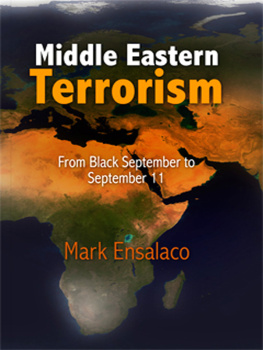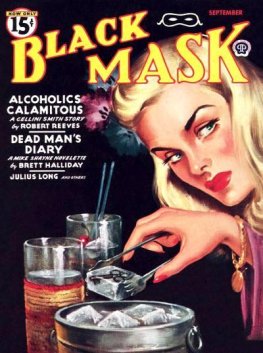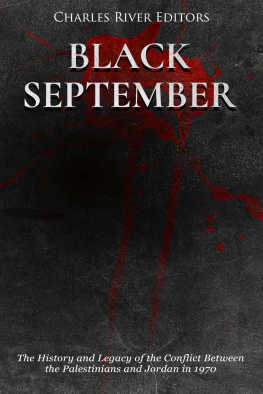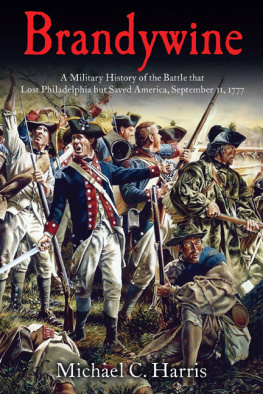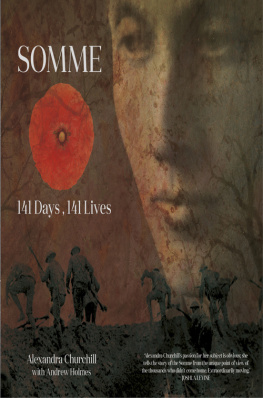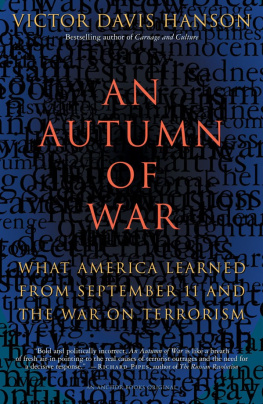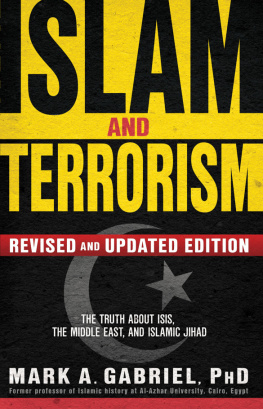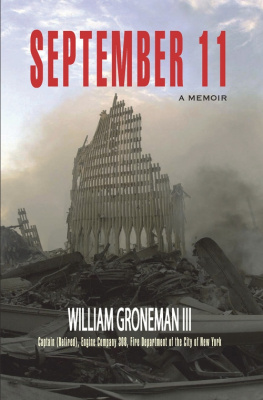Copyright 2008 University of Pennsylvania Press
All rights reserved. Except for brief quotations used for purposes of review or scholarly citation, none of this book may be reproduced in any form by any means without written permission from the publisher.
Published by
University of Pennsylvania Press
Philadelphia, Pennsylvania 191044112
Printed in the United States of America on acid-free paper
10 9 8 7 6 5 4 3 2 1
A Cataloging-in-Publication record is available from the Library of Congress
ISBN-13: 978-0-8122-4046-7
ISBN-10: 0-8122-4046-4
Introduction
In September 1970, a month that came to be known as Black September, terrorists belonging to the Popular Front for the Liberation of Palestine (PFLP) simultaneously hijacked three passenger jets bound for the United States in the skies over Europe. Alert air marshals prevented them from hijacking a fourth. Several days later, terrorists from the PFLP hijacked another jet. They flew the jets to a remote airfield in Jordan and held more than three hundred passengers hostage and issued a series of demands for the release of their comrades. The terrorists did not physically harm the hostages, or even threaten anyone. The incident dragged on for weeks. Then, in a spectacle to draw the world's attention to the plight of the Palestinian people, the terrorists blew up the empty jets as news cameras captured the images of exploding planes. That was 12 September 1970.
In September 2001, terrorists belonging to Al Qaeda simultaneously hijacked four American passenger jets in the skies over the United States. During the hijacking the terrorists stabbed and slashed passengers and flight attendants. They did not issue a single demand or statement of grievances. One hundred and eight minutes after the hijackings began, the terrorists crashed the jets into the World Trade Center's Twin Towers and the Pentagon as news cameras captured the images of exploding planes and collapsing buildings. The hijacking of the fourth jet was defeated by courageous passengers who sacrificed their own lives to prevent the destruction of the White House or the Capitol. In all, nearly three thousand perished. That was September 11, 2001.
In three decades the terrorism originating in the conflicts and geopolitics of the Arab and Muslim worlds had mutated from spectacle to atrocity.
On the morning of September 11, minutes after American Airlines flight 11 ripped through the World Trade Center's North Tower, the news director from the Dayton affiliate of ABC News summoned me to the newsroom. I had begun teaching courses on political violence and terrorism at the University of Dayton and for Air Force intelligence officers at Wright Patterson Air Force Base in 1989. The local news affiliate had called on me a number of times over the years: after the bombing of the World Trade Center in 1993, the attacks on military installations in Saudi Arabia in 1995 and 1996, the destruction of the U.S. embassies in Kenya and Tanzania in 1998, and the attack on the USS Cole in 2000.
I, like my colleagues who research or teach terrorism, knew enough about Osama bin Laden to be concerned about his organization. Al Qaeda was a clear and present danger to the United States. Bin Laden had issued a declaration of war against the Americans who occupy the land of the two holy mosques in 1996. In 1998 he issued a fatwa exhorting Muslims around the world to murder Americans anywhere they could find them. One had the disquieting sense that bin Laden could strike without warning. Al Qaeda terrorists had attacked and severely damaged the USS Cole just before the presidential elections in 2000. But as I watched the atrocity of September 11 unfold that morning, I was struck by its magnitude. I watched the towers collapse with the agonizing realization that thousands of human beings were dying before my eyes.
I returned to campus after the collapse of the towers and stood before a classroom of desperately frightened students. One student asked a question: Where did this come from?
As evening fell in the Midwest, my neighbors gathered in the commons behind our homes; an eerie silence hung over us because of the presidential order to halt all air traffic. The silence was broken by the sonic boom of two F-16 Falcons that roared out of Wright Patterson Air Force Base to rendezvous with Air Force One, which passed though Ohio airspace as the president returned to Washington from a Strategic Air Command Base in Nebraska. It was then that my wife persuaded me to write this book in an attempt to answer that student's question: Where did this come from?
The question can be taken to mean many things. Who was behind the attacks that Tuesday morning? What is the origin of the hostility? When did terrorists begin attacking Americans?
I remembered as a junior high school student watching the news coverage of terrorists destroying the empty passenger jets in the Jordanian desert in Black September 1970, and the spectacles that followed: the Lod Airport massacre, the Munich Olympic massacre, the destruction of Pan Am 103, and many other acts of terror. I could not think of a single book that covered the entire history of terror directed at Americans and American interests, so I decided to write one. This book narrates the evolution and transmutation of terrorism originating in the complex and conflictive politics and geopolitics of the Arab and Muslim worlds.
The contemporary era of terror began after Israel's victory in the Six Day War in 1967, an event that radicalized the Palestinian national liberation movement. It began with a campaign against civil aviationhijackings, with the first hijacking of an El Al flight in the summer of 1968; automatic weapon and grenade attacks at airport terminals; the sabotage of passenger jets in the air. Richard Nixon was the first U.S. president compelled to confront the threat of Middle East terror. Americans were slaughtered in some of the early terror operationstwenty-nine U.S. Catholic pilgrims to the Holy Land died in the Lod Airport massacre in 1972, and others were held hostage aboard hijacked jets. The terrorists justified such assaults because, in the words of one of those involved in the Skyjack Sunday operation in September 1970, No one heard our screams or our suffering.
In 1971, Yasser Arafat's Fatah faction of the PLO adopted the strategy of terror. This was the origin of the Black September organization. Its terror rampage lasted only three years, until the end of 1973. But in those three short years Black September conducted some of the most memorable operations: the murder of eleven Israeli Olympians in Munich in 1972 and of two U.S. diplomats a year later. The man behind Black September resorted to semantics in an attempt to distance himself from terrorism: I do not confuse revolutionary violence, which is a political act, he said, with terrorism, which is not.
The Israeli response to the atrocities by Black September, as well as the earlier ones by the PFLP, was guided by the biblical maxim of an eye for an eye: Israeli assassins hunted down and killed some of the men who were responsible, or thought to be responsible, for the terror directed against Israelis. The Nixon administration's response was more pragmatic. The CIA established a secret, back channel arrangement with the very men behind Black September. The arrangement was sealed with a warning. The violence against us has got to stop, the acting director of the CIA told Fatah representatives, or much blood will flow, and you may be sure that not all of it will be ours.


